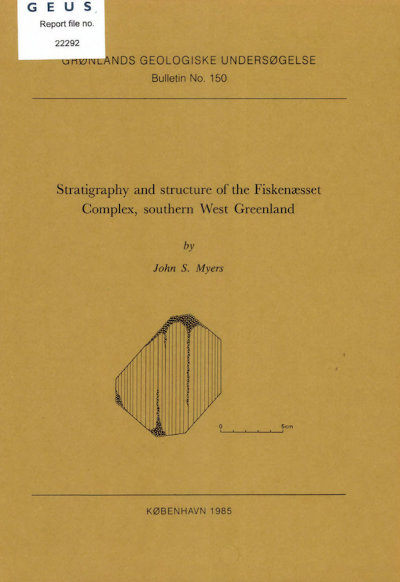Stratigraphy and structure of the Fiskenæsset Complex, southern West Greenland
DOI:
https://doi.org/10.34194/bullggu.v150.6692Abstract
The Fiskenæsset Complex is a deformed and metamorphosed, sheet-like, layered basic instrusion. It is an exceptionally well-preserved example of a suite of anorthositic rocks which are a widespread, but fragmentary, component of the Archaean gneiss complex of Greenland. In the Fiskenæsset region these rocks can be seen to be part of a single layered intrusion which consists of seven major lithostratigraphic units. In ascending order, these units are the Lower Gabbro (50 m), Ultramafic (40 m), Lower Leucogabbro (50 m), Middle Gabbro (40 m), Upper Leucogabbro (60 m), Anorthosite (250 m) and Upper Gabbro (50 m) Units. The Fiskenæsset Complex crystallised from tholeiitic magmas which were probably emplaced in at least 3 stages. It was intruded into basic volcanic rocks (now amphibolites) and, together with these rocks, was fragmented by the intrusion of granitoid sheets (now gneisses) associated with thrusting 2900-2800 m.y. ago. The Fiskenæsset Complex and metavolcanic rocks occur as thin layers and trains of inclusions within these gneisses which form about 80% of the region. All these rocks were folded together into large recumbent, nappe-like, folds (F1), and then refolded into dome-and-basin interference patterns by two sets of folds with steep axial surfaces at high angles to each other (F2 and F3). Deformation was locally heterogeneous, and all stages can be seen from undeformed to very strongly deformed rocks. Recrystallisation continued in amphibolite, and locally in granulite, facies during waning tectonic activity, and most rocks have equigranular mosaic textures. Although it is extensively recrystallised and deformed, the Fiskenæsset Complex locally preserves a variety of little deformed igneous structures and cumulate textures which demonstrate the important influence of both gravitational and current action during igneous crystallisation. Various kinds of igneous layering provide primary way-up structures which can be used to interpret the facing directions of Fl folds, and various stages of deformation of cumulate textures provide evidence of the tectonic and metamorphic processes by which banded anorthositic gneisses and amphibolites were derived from igneous rocks by progressive deformation.
Downloads
Published
Issue
Section
License
This article is distributed under a CC-BY 4.0 licence, permitting free redistribution and reproduction for any purpose, even commercial, provided proper citation of the original work. Author(s) retain copyright over the article contents.


